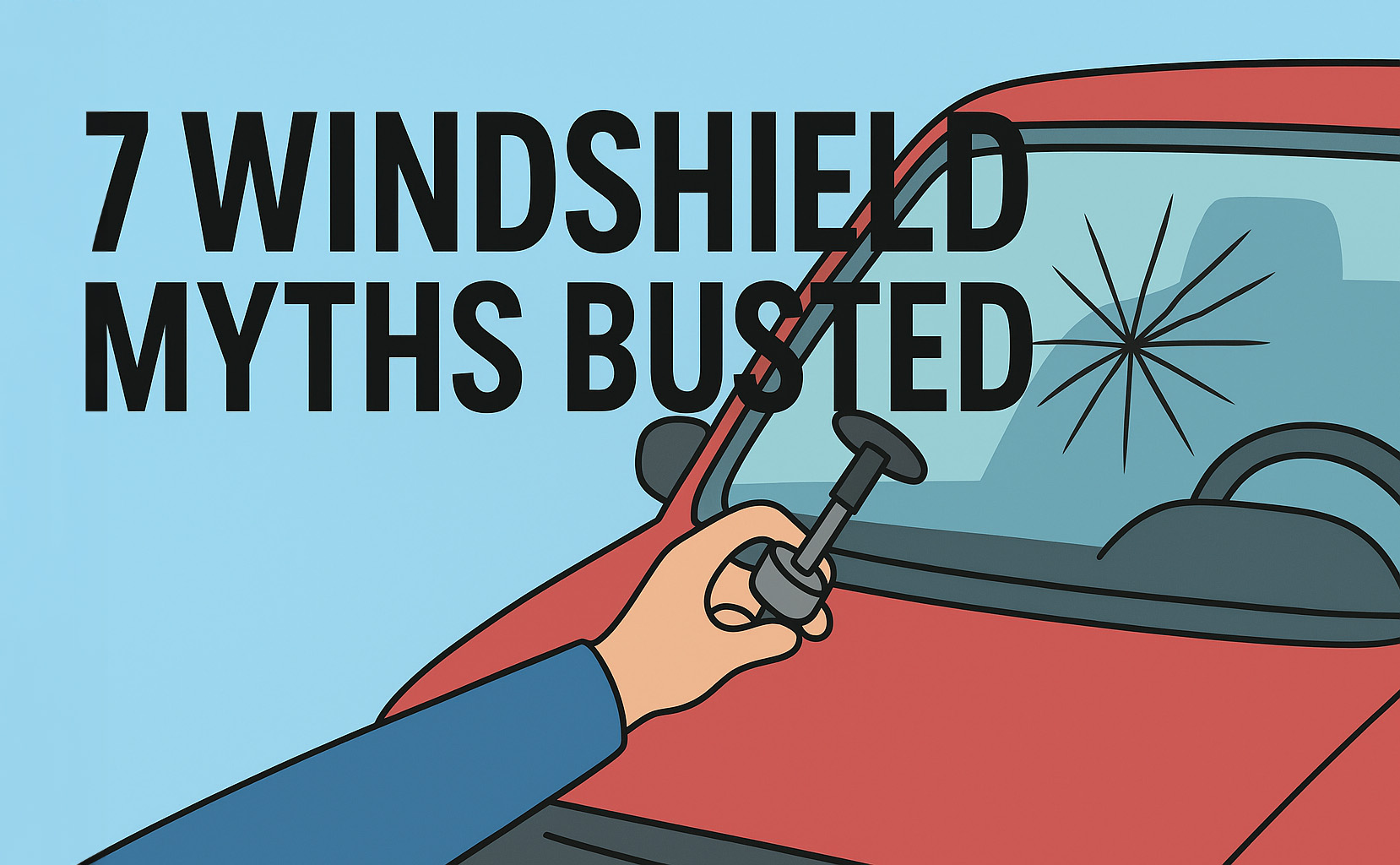Your windshield is more than just a piece of glass—it’s a critical safety feature of your vehicle. It supports the structural integrity of your car, helps deploy airbags correctly, and provides clear visibility while driving. Unfortunately, there are countless myths and misconceptions about windshield cracks, repairs, and replacements that can lead to unsafe decisions.
In this article, we’ll separate fact from fiction and help you understand the truth about windshield care.
Myth #1: A Small Crack Is No Big Deal
Reality: Even the smallest crack or chip in your windshield can become a major problem if left untreated. Temperature fluctuations, road vibrations, and everyday stress can cause cracks to spread quickly.
A seemingly harmless chip can grow into a full-length crack within days, making repair impossible and requiring a full replacement. Ignoring the issue can also compromise your safety because a damaged windshield is weaker and more likely to shatter in a collision.
What You Should Do: Address chips or cracks immediately. Professional repairs are quick, affordable, and restore the integrity of the glass when done promptly.
Myth #2: You Can Drive Safely with a Cracked Windshield
Reality: Driving with a cracked windshield isn’t just dangerous—it’s often illegal. Your windshield plays a crucial role in maintaining your car’s structural strength. In a rollover accident, a windshield in good condition helps prevent the roof from collapsing.
A crack weakens this structure, making your vehicle less safe in the event of a collision. Moreover, cracks can distort visibility, increasing the risk of accidents.
Legal Consequences: Many states have laws prohibiting driving with windshield damage in the driver’s line of sight. You could face fines or fail vehicle inspections if you ignore the problem.
Myth #3: DIY Repair Kits Are Just as Good as Professional Repairs
Reality: While DIY windshield repair kits may seem like an easy and affordable fix, they rarely provide the same results as a professional repair. Professionals use specialized resins, tools, and curing methods to ensure the crack is properly sealed and the structural integrity is restored.
Improper DIY repairs can trap air bubbles, leave the crack visible, and even make it harder to fix later—often forcing you to pay for a full replacement.
Best Practice: Use a professional service, especially if the chip is larger than a quarter or the crack is longer than three inches.
Myth #4: A Cracked Windshield Will Shatter at Any Moment
Reality: Modern windshields are made of laminated safety glass, which consists of two layers of glass bonded with a plastic layer in between. This design prevents the glass from shattering into sharp pieces.
However, that doesn’t mean you can ignore the damage. A cracked windshield is still weaker and more likely to fail under stress, especially during an accident or if hit by another object.
Bottom Line: It’s unlikely to shatter while driving, but the risk of complete failure is significantly higher with cracks.
Myth #5: Replacing a Windshield Takes All Day
Reality: Most professional windshield replacements take about 60 minutes. After installation, there’s a short curing period for the adhesive to set—usually one to two hours before the car is safe to drive.
Some providers even offer mobile windshield replacement, meaning they’ll come to your home or workplace for maximum convenience.
Myth #6: Windshield Repairs Are Expensive
Reality: Repairing a small chip or crack is often far less expensive than you think—and much cheaper than replacing the entire windshield. Many insurance policies even cover windshield repair with no deductible, thanks to its role in vehicle safety.
Pro Tip: Check your insurance policy. In many states, windshield repairs or replacements are fully covered without affecting your premium.
Myth #7: All Glass Is the Same
Reality: Not all glass is created equal. Original Equipment Manufacturer (OEM) glass is designed to match your vehicle’s specifications, while aftermarket glass may vary in quality. Using low-quality glass or improper installation can affect visibility, safety, and even Advanced Driver Assistance Systems (ADAS) calibration in modern vehicles.
The Truth About Safety: Why Windshield Integrity Matters
Your windshield isn’t just a piece of glass—it’s a major component of your car’s safety system. In a crash, it helps support airbags, prevents passengers from being ejected, and maintains the structural frame of your car.
When compromised, even slightly, your safety is at risk. That’s why timely repairs and professional service are essential.
Final Takeaway: Don’t Believe the Myths
Cracked windshields aren’t something you can ignore or fix casually with a cheap kit. Professional repairs and replacements are fast, affordable, and critical for your safety.
Need a Repair or Replacement?
Don’t wait for that chip to spread into a costly crack. Use our free quote tool at Glass.net

To read more, visit blog.glass.net

